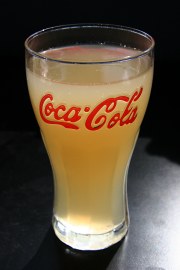
I suspect some scientists, like some science writers, you might say, have toooo much time on their hands. Nature’s Declan Butler trawled the Technorati blog directory for blogs written by scientists and found that of the 45 million or so blogs it lists at least five scientists’ blogs that make it into the top 3,500.
“There is little agreement about how to rank blogs,” Butler says, “no method is perfect.” He adds that given the huge number of blogs, there will no doubt be omissions. The exercise is, he says, best viewed as “a rough snapshot”. Nevertheless, the results demonstrate (somehow, the press release doesn’t say) that there has been a rapid increase in popularity of scientists’ blogs, and reveal several lessons for science bloggers hoping to get noticed.
I asked Butler about his motive for assessing science blogs in this way, “My idea was really just to get some idea of where science blogs stood in the blogosphere, and also draw attention to the issue of blogging in science,” he told me.
Anyway, here are the Top 5 Science Blogs according to Butler’s Technorati analysis:
179th Pharyngula http://scienceblogs.com/pharyngula
1,647th The Panda’s Thumb http://www.pandasthumb.org
1,884th RealClimate http://www.realclimate.org
2,174th Cosmic Variance http://cosmicvariance.com
3,429th The Scientific Activist http://scienceblogs.com/scientificactivist
Intriguingly, at least two of those Top 5 science blogs is aimed at quashing the pseudoscience claptrap spouted by the extremists in the intelligent design, creationist and reactionary religious movements. All five of those discussed appear to provide a sensible view of various issues with which science is concerned and provide beacons that might see us out of the dark ages of the present anti-science stance many bloggers are taking today.
(Just for the record your very own sciencebase.com comes in at a rather respectable 852nd, although it was about 605th a couple of weeks ago, so not sure how valid their trackback algo really is, to be honest).

 A couple of weeks ago my Dell laptop started stopping, as it were. At first, I thought it was an issue with the CPU overheating, which I thought I’d addressed with a BIOS update, but a CPU temperature monitoring program showed things were apparently fine in that department. After it happened three or four times, I realised that it was happening when I moved in my chair, or when I leant on the wrist-rest part of the base, or adjusted the screen angle, or inserted a PCMCIA card, or opened the DVD drawer…eventually it wouldn’t even POST, let alone BOOT, so basically I was stuck with a dead Dell.
A couple of weeks ago my Dell laptop started stopping, as it were. At first, I thought it was an issue with the CPU overheating, which I thought I’d addressed with a BIOS update, but a CPU temperature monitoring program showed things were apparently fine in that department. After it happened three or four times, I realised that it was happening when I moved in my chair, or when I leant on the wrist-rest part of the base, or adjusted the screen angle, or inserted a PCMCIA card, or opened the DVD drawer…eventually it wouldn’t even POST, let alone BOOT, so basically I was stuck with a dead Dell.